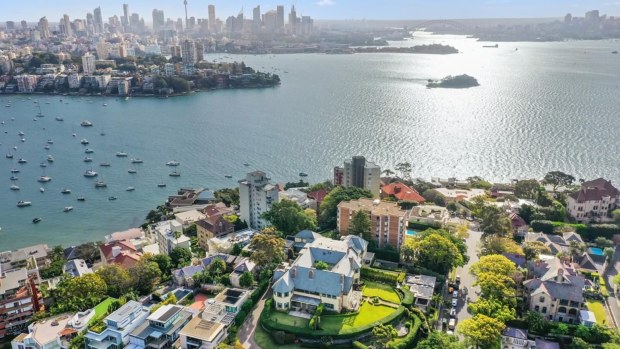The 2022 Mumbrella Awards ended at Royal Randwick, with Hatched winning Media Agency of the Year for the first time and Thinkerbell taking home Full Service Agency of the Year for the second time in a row.
Thinkerbell also won the Independent Agency of the Year category, in which it was highly commended (HC) in 2021.

The awards ceremony was hosted by writer and comedian Paul McDermott, as over 30 awards were handed out to the best talent and innovators across Australia and New Zealand’s marketing, advertising, media, production, PR and communications industries.
Howatson+Company received a nod as Emerging Agency of the Year, while its Rejected Ales campaign for Matilda Bay was crowned the Mumbrella Award for Insight.
ADVERTISEMENT
The rest of the Agency of the Year categories were split between Thrive PR (PR), AKQA (Specialist), Traffic (Promo or Experiential) and The Monkeys, part of Accenture Song (Creative).
72andSunny’s work ‘Helping You Help Them’ for Google earned it the Ad Campaign of the Year award. The campaign was showcased in 2021 to celebrate community helpfulness. For TV Ad of the Year, Special’s Christmas campaign for Optus, ‘Yuleglide’, received the crown.
Other brands and agencies winning the night include Half Dome, PHD Media, CHEP Network, Tourism Noosa, Broadsheet and more.
See the full list of winners below:

Winner: Remove The Barrier – Great Barrier Reef Foundation with Arcadia, Only Everything, We Are Different

- Mumbrella Award for Bravery
Winner: NAB JAB – Six Black Pens & TBWA with Mindshare for NAB

- Mumbrella Award for Culture
Winner: Half Dome

- Mumbrella Award for Insight
Winner: Rejected Ales – Howatson+Company for Matilda Bay

- Mumbrella Award for Innovation
Winner: The Rocket Stove – FINCH/Creatable

- Mumbrella Award for Data-Driven Marketing
Winner: Real-Time Routes – PHD Media for Virgin Australia
HC: realestate.com.au Property Owner Track Acquisition – REA Group

- Mumbrella Award for Collaboration
Winner: Performance Enhancing Music – CHEP Network with Spotify, Resonance Sonic Branding for Samsung Electronics Australia

- Mumbrella Award for Sustainable Practices
Winner: Tourism Noosa Sustainability Programs – Tourism Noosa

- Marketing Team of the Year
Winner: Uber
HC: Optus

Winner: The Trade Desk ANZ

- Marketing Technology Company of the Year
Winner: Tracksuit

- Content Marketing Strategy of the Year
Winner: Crime Interrupted – Host/Havas for Australian Federal Police

- Best Use of User Experience
Winner: Planet Puberty – GHO Sydney for Family Planning NSW

- Best Use of Real-Time Marketing
Winner: McGowan Sofa Bed – The Royals for Koala
HC: Federal Budget 2021 – Six Black Pens with NAB, Mindshare for NAB

- Under-30 Achiever of the Year
Winner: Grace Watkins, CEO & Co-founder, Click Management
HC: Camille Gray, Strategy Director, Initiative Australia
HC: Kate Holland, Marketing Manager, UnLtd/MOOD

- Industry Leader of the Year
Winner: Melissa Fein, CEO, Initiative Australia
HC: Nick Shelton, Director & Publisher, Broadsheet Media

- Production Company of the Year
Winner: Mushroom Creative House

- Best Use of Experiential Marketing
Winner: KFC Big Bucket – Prism Sport + Entertainment with Mediacom, Ogilvy, OPR, Geometry, Stanhaz Events, NRL for KFC (Yum)

- Pro Bono Campaign of the Year
Winner: Donation Dollar – Saatchi & Saatchi for Royal Australian Mint

Winner: Yuleglide – Special with Finch, Flux and Universal McCann for Optus

No winner representative was present at the ceremony
- Media Campaign of the Year
Winner: Origin SnackDown – HERO with UM, Channel 9 for Menulog
HC: Crime Interrupted – Host/Havas for Australian Federal Police

Winner: Helping You Help Them – 72andSunny ANZ with Finch, Thirteen & Co, Otis, Vandal, Atticus & PHD for Google Australia
HC: One House to Save Many – Leo Burnett Australia with CSIRO, James Cook University, Room 11 Architects, The Glue Society, OMD. for Suncorp Group

Winner: Broadsheet Media
HC: Man of Many

- Full Service Agency of the Year
Winner: Thinker Bell

Winner: Thrive PR
HC: Eleven

- Specialist Agency of the Year
Winner: AKQA
HC: Orchard
HC: Shadowboxer

- Emerging Agency of the Year
Winner: Howatson+Company
HC: Campfire x

- Promo or Experiential Agency of the Year
Winner: Traffic

- Independent Agency of the Year
Winner: Thinker Bell
HC: Special

Winner: Hatched
HC: Initiative

- Creative Agency of the Year
Winner: The Monkeys, part of Accenture Song













